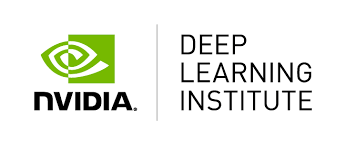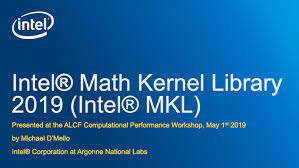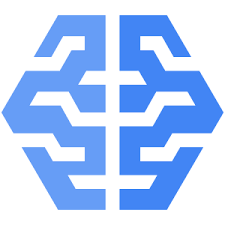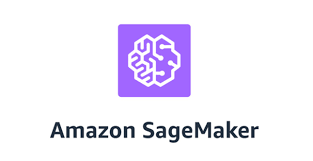Artificial Intelligence (AI) is transforming the gaming industry, providing game developers with new and exciting ways to create immersive and dynamic gaming experiences. AI tools have enabled developers to create smarter, more intuitive games that adapt to the player's behavior and provide personalized gameplay. From machine learning algorithms to computer vision libraries and game engine plugins, the range of AI tools available today is vast, and each tool offers unique capabilities for game developers.
In this blog, we'll take a closer look at some of the best AI tools available for gaming and how they can enhance gameplay, improve user experience, and increase engagement. We'll explore how AI is being used in different aspects of game development, from procedural content generation to game design and player behavior analysis. So whether you're a game developer looking to incorporate AI into your game or a gamer interested in learning more about the technology behind your favorite games, this blog has something for you.
Unity

Unity is a popular game development platform that also offers a wide range of AI tools for game developers. Unity's AI tools are designed to help game developers create smart and engaging game characters, NPCs, and enemies. Unity's AI tools can be used to create behaviors, actions, and decision-making capabilities for game characters, as well as for creating immersive and realistic game environments. Unity's AI tools are easy to use and can be customized to fit a game developer's needs, making it a valuable asset for any game development project.
Pros
Cons
Overall Rank
Unreal Engine

Unreal Engine's AI tool is a powerful and versatile tool for game developers, allowing them to create intelligent and responsive NPCs and enemies. With the tool's advanced behavior tree system, developers can create complex decision-making processes for their AI characters, allowing them to react to changing circumstances and make intelligent decisions based on their environment. The tool also includes a range of advanced features, such as perception systems and pathfinding algorithms, that can be used to create immersive and challenging gameplay experiences. Additionally, Unreal Engine's AI tool is highly customizable, allowing developers to tailor the behavior of their AI characters to suit the needs of their game.
Pros
Cons
Overall Rank
Autodesk Maya

Autodesk Maya is a widely used 3D computer graphics software that is known for its versatile and powerful capabilities. With the integration of AI tools, Maya has become even more sophisticated, allowing artists to create more intricate and detailed designs with greater efficiency and ease. One such AI tool is the Shape Authoring Toolkit, which uses machine learning algorithms to analyze and interpret an artist's sketches and then converts them into 3D models. This tool helps to save time and reduce the manual effort required in the modeling process, while still allowing for a high degree of creativity and customization. Additionally, Maya's AI-powered animation tools, such as the Time Editor, allow for more streamlined and precise animation workflows.
Pros
Cons
Overall Rank
Blender

Blender is an open-source 3D creation software that is widely used in various industries such as animation, gaming, and architecture. With its recent integration of AI-powered tools, Blender has become even more powerful and versatile. One such tool is the AI denoiser, which uses machine learning algorithms to remove noise from rendered images in real-time, thus saving valuable rendering time. Additionally, the AI pose detector allows for more accurate and efficient character animation by predicting poses based on previous movements. The AI texture generator is also a useful tool, which generates high-quality textures based on user input, thus eliminating the need for tedious manual texture creation.
Pros
Cons
Overall Rank
Houdini

Houdini AI tool is a cutting-edge software that leverages the power of artificial intelligence to create realistic and complex simulations for various industries such as film, gaming, and engineering. With Houdini AI, users can generate stunning visual effects and animations with ease, thanks to its intuitive interface and vast library of pre-built tools. What sets Houdini AI apart from other simulation software is its ability to learn from user feedback and adapt its algorithms to create even more accurate and lifelike simulations. This feature enables users to fine-tune their simulations quickly and efficiently, reducing the time and effort needed to achieve the desired outcome.
Pros
Cons
Overall Rank
TensorFlow

TensorFlow is an open-source AI framework developed by Google that allows users to build and deploy machine learning models efficiently. TensorFlow offers a range of tools for creating models, including pre-built models, which can be customized according to the user's needs. It also provides an interactive and intuitive interface that allows users to experiment with different models and algorithms easily. TensorFlow has gained popularity among researchers and businesses alike for its flexibility, scalability, and extensive documentation, making it an essential tool for building intelligent systems that can perform tasks such as image recognition, natural language processing, and predictive analytics.
Pros
Cons
Overall Rank
PyTorch

PyTorch is an open-source machine learning library that provides a powerful and flexible platform for building and training deep learning models. One of the key advantages of PyTorch is its dynamic computation graph, which enables developers to create neural networks with complex and varying architectures. Additionally, PyTorch offers a user-friendly interface and extensive documentation, making it accessible to both researchers and developers. With PyTorch, users can easily build and train models in Python, and take advantage of its robust set of tools and libraries to solve a wide range of problems, from natural language processing to computer vision and beyond.
Pros
Cons
Overall Rank
Caffe

Caffe is an open-source deep learning framework developed by the Berkeley Vision and Learning Center. It allows users to create and train neural networks for various computer vision tasks such as image classification, segmentation, and object detection. Caffe is known for its efficient implementation of convolutional neural networks (CNNs) and its ability to handle large datasets. Additionally, it has a simple and user-friendly interface that makes it easy to build, train, and deploy models even for those without extensive programming experience. Caffe has become a popular choice for researchers and industry professionals due to its flexibility, speed, and accuracy.
Pros
Cons
Overall Rank
Torch

Torch is an open-source machine learning library that is used for developing and training various deep learning models. Torch provides a user-friendly and flexible environment for building artificial neural networks and implementing various machine learning algorithms. One of the key features of Torch is its dynamic computation graph, which allows users to make changes to the model architecture on the fly. This enables fast and efficient experimentation with different network architectures and hyperparameters, making it a popular tool among researchers and developers. Torch is written in Lua and has interfaces for various programming languages such as Python, C++, and Java, making it easily accessible for developers across different domains and platforms.
Pros
Cons
Overall Rank
Keras

Keras is a high-level open-source neural network API written in Python. It is designed to be user-friendly, modular, and extensible, allowing for quick and easy experimentation with deep learning models. Keras supports both convolutional and recurrent neural networks and can run on top of TensorFlow, Microsoft Cognitive Toolkit, Theano, and PlaidML. It also offers a range of pre-trained models and allows for easy transfer learning. Keras is widely used in various industries, including healthcare, finance, and automotive, to solve complex problems such as image classification, natural language processing, and predictive analytics.
Pros
Cons
Overall Rank
OpenCV

OpenCV AI Tool is a comprehensive open-source computer vision library that has revolutionized the world of artificial intelligence. It is designed to enhance image processing tasks such as object detection, face recognition, and tracking, and it comes with a set of powerful algorithms that can handle various visual tasks in real-time. The tool is supported by a large community of developers, and it is highly customizable, making it suitable for a wide range of applications. One of the standout features of the OpenCV AI tool is its ability to run on different platforms, including mobile devices, desktops, and embedded systems, which makes it highly versatile and widely accessible.
Pros
Cons
Overall Rank
NVIDIA Deep Learning SDK

The NVIDIA Deep Learning SDK AI tool is a comprehensive software development kit designed to accelerate the development of deep learning applications. It provides a set of high-level APIs and libraries that enable developers to quickly and easily integrate deep learning into their applications. The SDK supports popular deep learning frameworks such as TensorFlow, PyTorch, and MXNet, and provides optimized performance for NVIDIA GPUs, making it an ideal choice for high-performance computing.
Pros
Cons
Overall Rank
Intel Math Kernel Library

The Intel Math Kernel Library (MKL) AI tool is a powerful software library that provides optimized mathematical functions for machine learning and deep learning applications. It offers high-performance computing capabilities for Intel processors, allowing for efficient execution of complex algorithms in a variety of programming languages. The MKL includes functions for linear algebra, Fourier transforms, vector math, and more, providing a comprehensive set of tools for data scientists and developers. Additionally, the MKL is compatible with popular machine learning frameworks such as TensorFlow and PyTorch, making it easy to integrate into existing workflows and projects. Overall, the Intel Math Kernel Library is a valuable tool for anyone looking to accelerate their AI applications and achieve faster results.
Pros
Cons
Overall Rank
Scikit-learn

Scikit-learn is a popular open-source machine learning library in Python, providing efficient and robust tools for data analysis, predictive modeling, and clustering. It offers a wide range of functionalities, including supervised and unsupervised learning algorithms, feature selection, and preprocessing techniques. Scikit-learn is well-known for its simplicity and ease of use, allowing both beginners and experienced data scientists to implement complex algorithms with just a few lines of code. Additionally, it integrates seamlessly with other Python libraries, such as NumPy, Pandas, and Matplotlib, making it a powerful tool for data exploration and visualization. Its extensive documentation and active community support also make it a go-to library for data science projects.
Pros
Cons
Overall Rank
Google Cloud AI Platform

The Google Cloud AI Platform AI tool is a powerful platform that enables businesses to easily build, deploy, and scale machine learning models in the cloud. With a user-friendly interface and a wide range of pre-built models and tools, the platform allows even those with limited machine learning experience to quickly and easily develop and deploy custom models for a wide range of applications. Additionally, the platform provides robust infrastructure and data management tools, allowing businesses to manage their data and models with ease. With the Google Cloud AI Platform AI tool, businesses can unlock the power of machine learning to improve their operations, gain insights, and deliver better products and services to their customers.
Pros
Cons
Overall Rank
Amazon SageMaker

Amazon SageMaker is an integrated end-to-end platform that enables developers to build, train, and deploy machine learning models at scale. With its user-friendly interface, data scientists can easily prepare and label their data, choose from pre-built algorithms, and tune their models to achieve the best performance. SageMaker also offers advanced features such as automatic model tuning and model hosting on a secure, scalable, and highly available infrastructure. Moreover, SageMaker provides a wide range of integrations with other AWS services such as S3, Redshift, and Athena, allowing seamless data transfer and storage.
Pros
Cons
Overall Rank
IBM Watson

IBM Watson is an artificial intelligence tool that leverages natural language processing, machine learning, and other advanced technologies to analyze vast amounts of data and provide insights. It can process structured and unstructured data, including text, images, and video, making it a versatile tool for various industries. Watson can be used to automate mundane tasks, improve decision-making processes, and enable businesses to innovate and grow. Its ability to learn and adapt over time allows it to improve its accuracy and efficiency with each use case. With its powerful cognitive capabilities, IBM Watson is a tool that can revolutionize how businesses operate and make strategic decisions.
Pros
Cons
Overall Rank
In conclusion, AI tools have revolutionized the gaming industry, providing developers with new and innovative ways to enhance gameplay, improve user experience, and increase engagement. The use of AI in gaming has grown significantly over the years, and the tools available today have made it easier than ever for developers to incorporate AI into their games. The AI tools for gaming discussed in this blog are some of the best available, and they each bring unique features and capabilities to the table. From game engine plugins to machine learning frameworks and computer vision libraries, these tools offer developers a range of options to create more immersive, dynamic, and intelligent gaming experiences. As the gaming industry continues to evolve, we can expect to see even more advanced AI tools and techniques being developed. As a result, we can look forward to more exciting and immersive gaming experiences that leverage the power of AI. Ultimately, the use of AI in gaming is a win-win situation for both developers and players, and it will undoubtedly continue to shape the future of the gaming industry for years to come.
